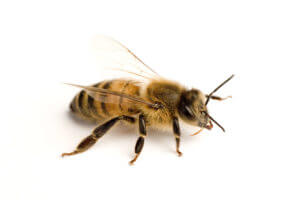Everyone has heard of killer bees, or as they are also known, Africanized honey bees. While bees do possess stingers that can deal out painful stings as a result of their toxic venom, very few bee species demonstrate aggressive behavior toward humans. Typically it takes effort to provoke a bee into stinging a person. Killer bees happen to be one exception to this general rule, as they will not hesitate to swarm individuals before dealing out stings. Every year fatalities in the United States result from killer bee attacks. Despite their well known tendency toward aggressive behavior, scientists have traditionally been in the dark concerning the reasons for this aggression. However, Brazilian researchers have just discovered a bodily chemical that is responsible for putting the “killer” into killer bees.
In addition to discovering the bodily chemical responsible for the aggression demonstrated by killer bees, researchers learned that this chemical can also cause aggressive behaviors in normal honey bees after they are administered the chemical. According to a study published in Journal of Proteome Research the chemical that makes killer bees aggressive is produced in the bodies of many different animal species, such as flies and mice. However, when it comes to flies, mice and many other animals, the aggressive chemical seems to regulate food intake and hunger more so than aggression levels.
The researchers discovered that the chemical in question is a type of neurohormone that is produced in the brain. In many animals, neurohormones are responsible for regulating social behavior. Neurohormones are kicked into action by neuropeptide precursors. Young bee workers that belong to the killer bee species do not demonstrate aggressive behavior until they mature. This is due to the fact that the neuropeptides within the bodies of young killer bee workers have yet to develop to the point where they can facilitate specific neurological functions, in this case aggression. Once a killer bee reaches 15 to 20 days of age, it will develop into an aggressive creature.
Do you think that this “aggression chemical” is found in human brains as well as bee brains?







